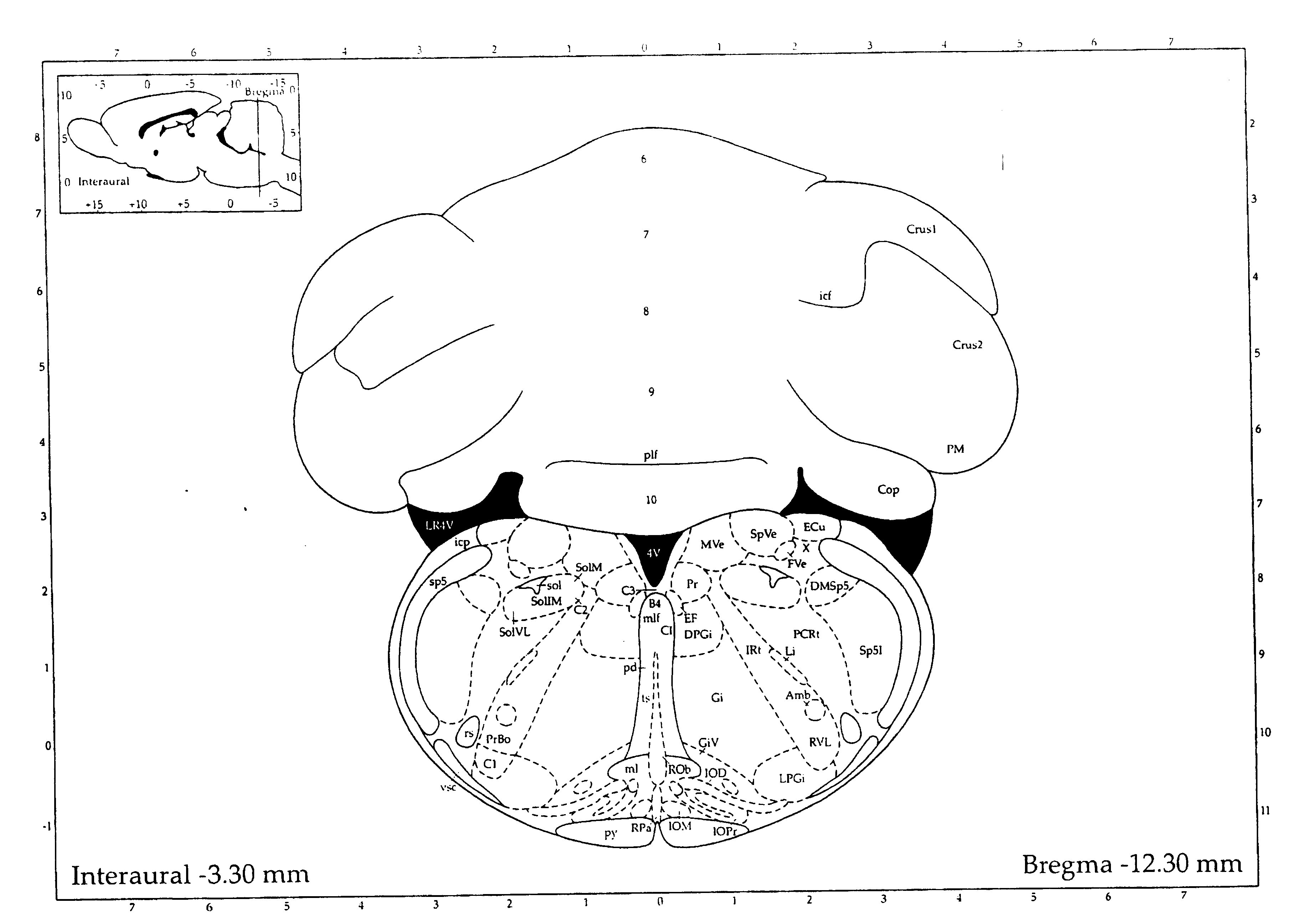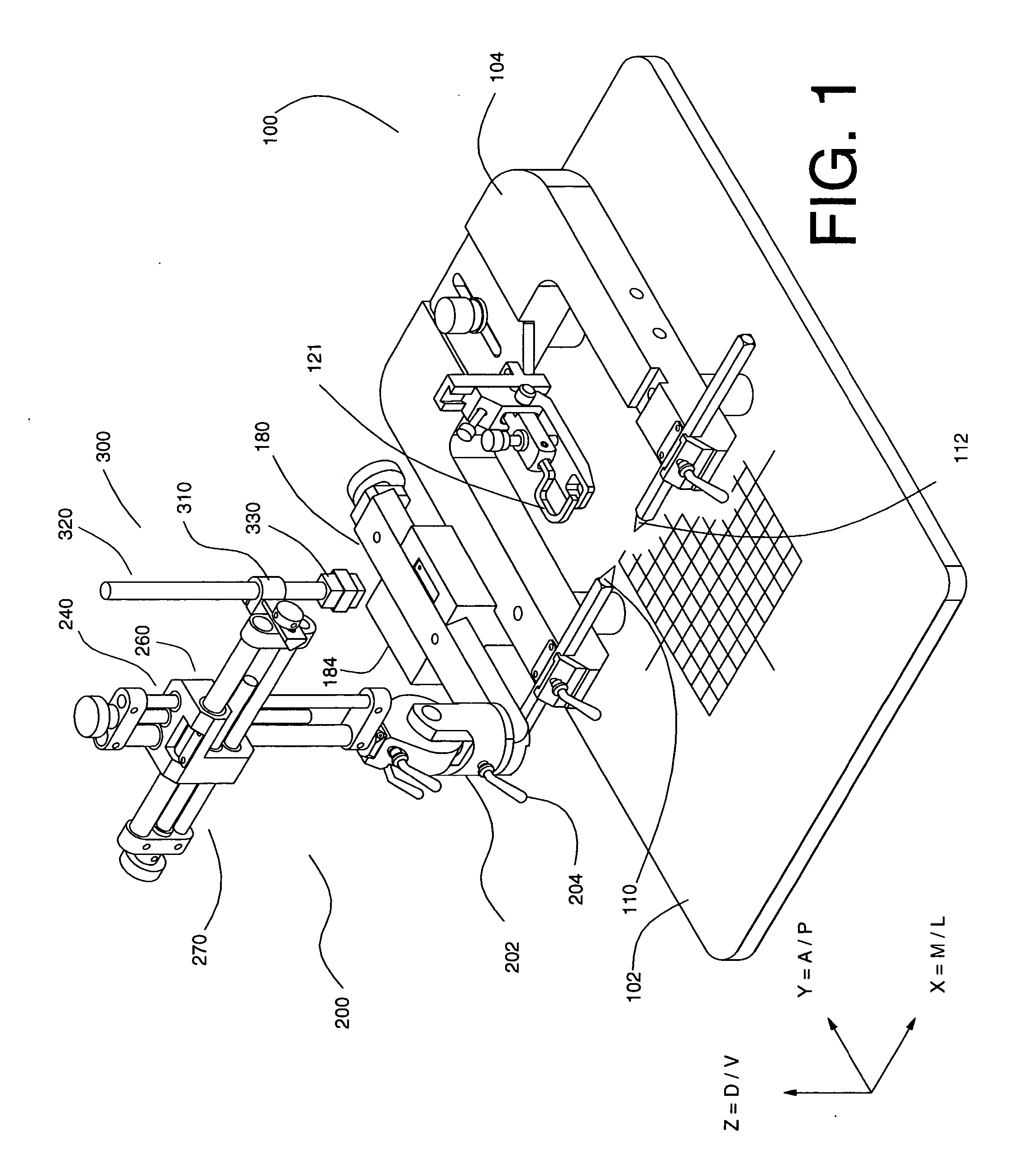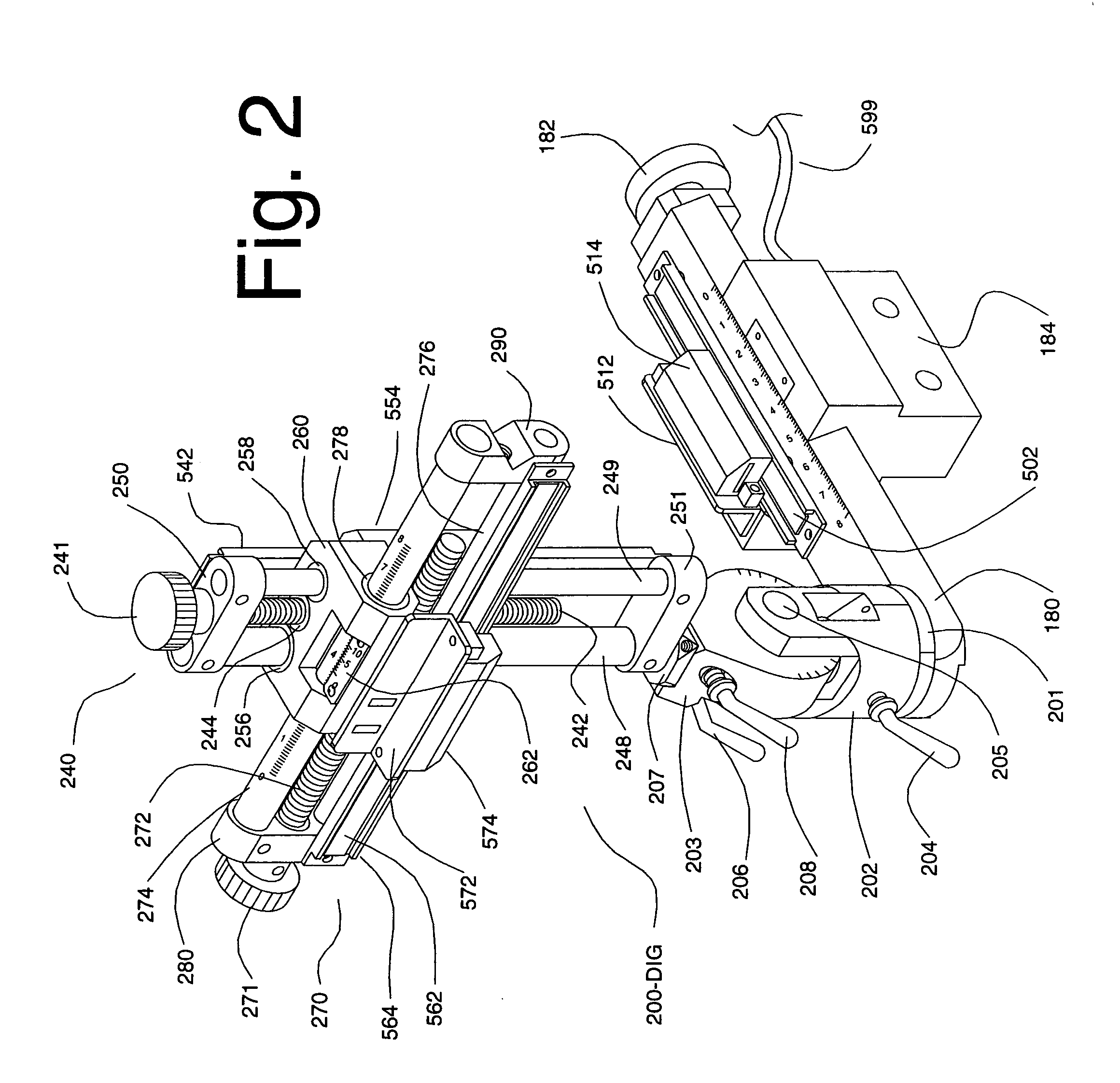Digital stereotaxic manipulator with interfaces for use with computerized brain atlases
a digital stereotaxic and brain atlase technology, applied in the field of electromechanical devices, can solve the problems of difficult to achieve, difficult to achieve, difficult to obtain accurate and reliable results, etc., and achieve the effect of reducing the possibility of damage to the brain of the animal and good resolution
- Summary
- Abstract
- Description
- Claims
- Application Information
AI Technical Summary
Benefits of technology
Problems solved by technology
Method used
Image
Examples
Embodiment Construction
[0078] As summarized above, this invention discloses certain enhancements for a combination device that was previously described in utility patent application Ser. No. 10 / 636,899, filed in August 2003. That system has been publicly advertised and sold by Coretech Holdings and its subsidiary, myNeuroLab, since shortly after the filing of that application.
[0079] Briefly, a “baseline” system that does not include the enhancements of this current invention includes the following major subassemblies and components:
[0080] (1) a stereotaxic manipulator 3000 (with a general structure such as shown in FIGS. 1-3) for holding rats, mice, or other non-human animals, which has been equipped with both: (i) linear scales and electronic reader heads that enable digital measurement of linear motion of an instrument tip along all three orthogonal axes, such as scale-and-reader combinations 512 and 514 (on slide 180), 542 and 554 (in vertical arm 240), and 562 and 574 (on horizontal arm 270); and, (...
PUM
 Login to View More
Login to View More Abstract
Description
Claims
Application Information
 Login to View More
Login to View More - R&D
- Intellectual Property
- Life Sciences
- Materials
- Tech Scout
- Unparalleled Data Quality
- Higher Quality Content
- 60% Fewer Hallucinations
Browse by: Latest US Patents, China's latest patents, Technical Efficacy Thesaurus, Application Domain, Technology Topic, Popular Technical Reports.
© 2025 PatSnap. All rights reserved.Legal|Privacy policy|Modern Slavery Act Transparency Statement|Sitemap|About US| Contact US: help@patsnap.com



